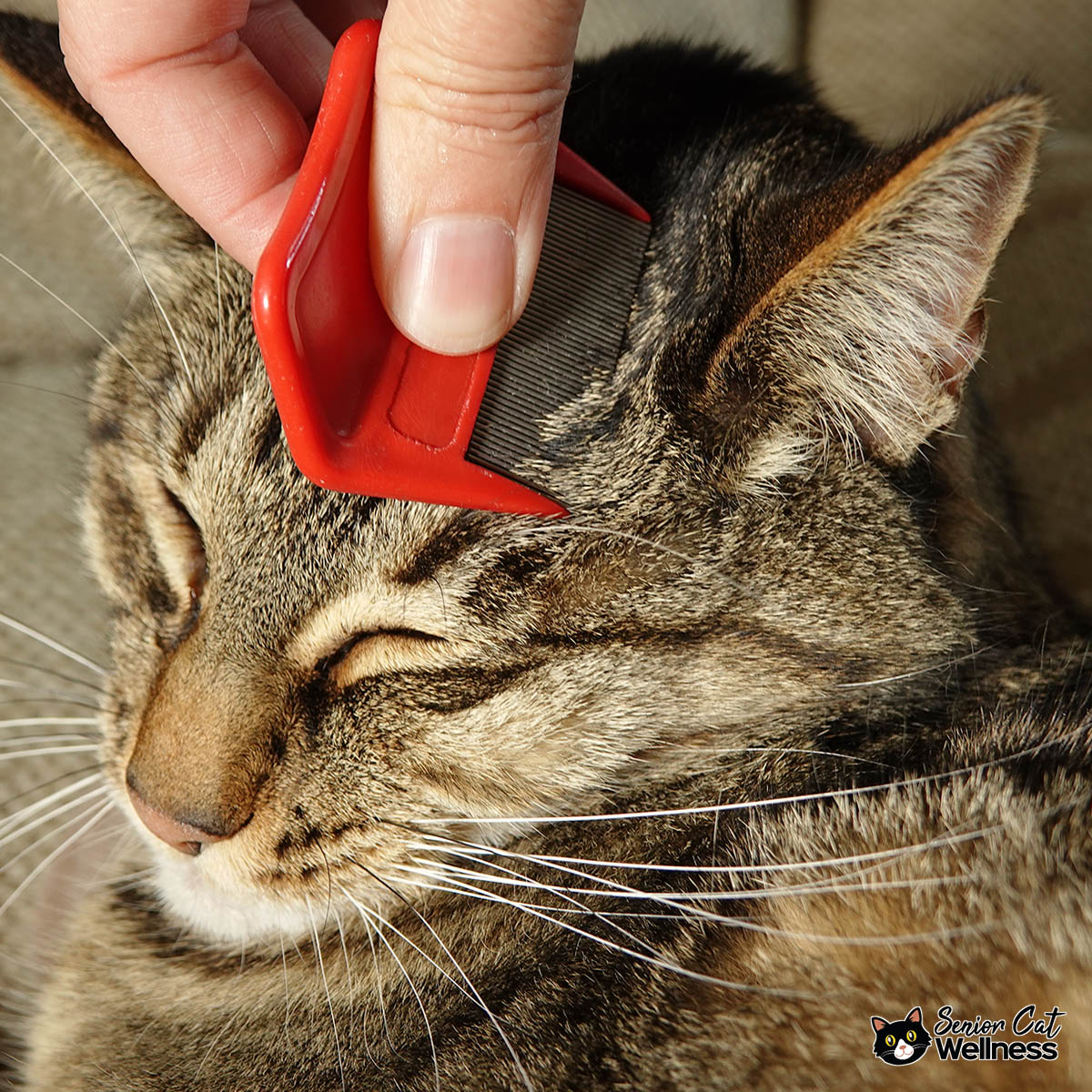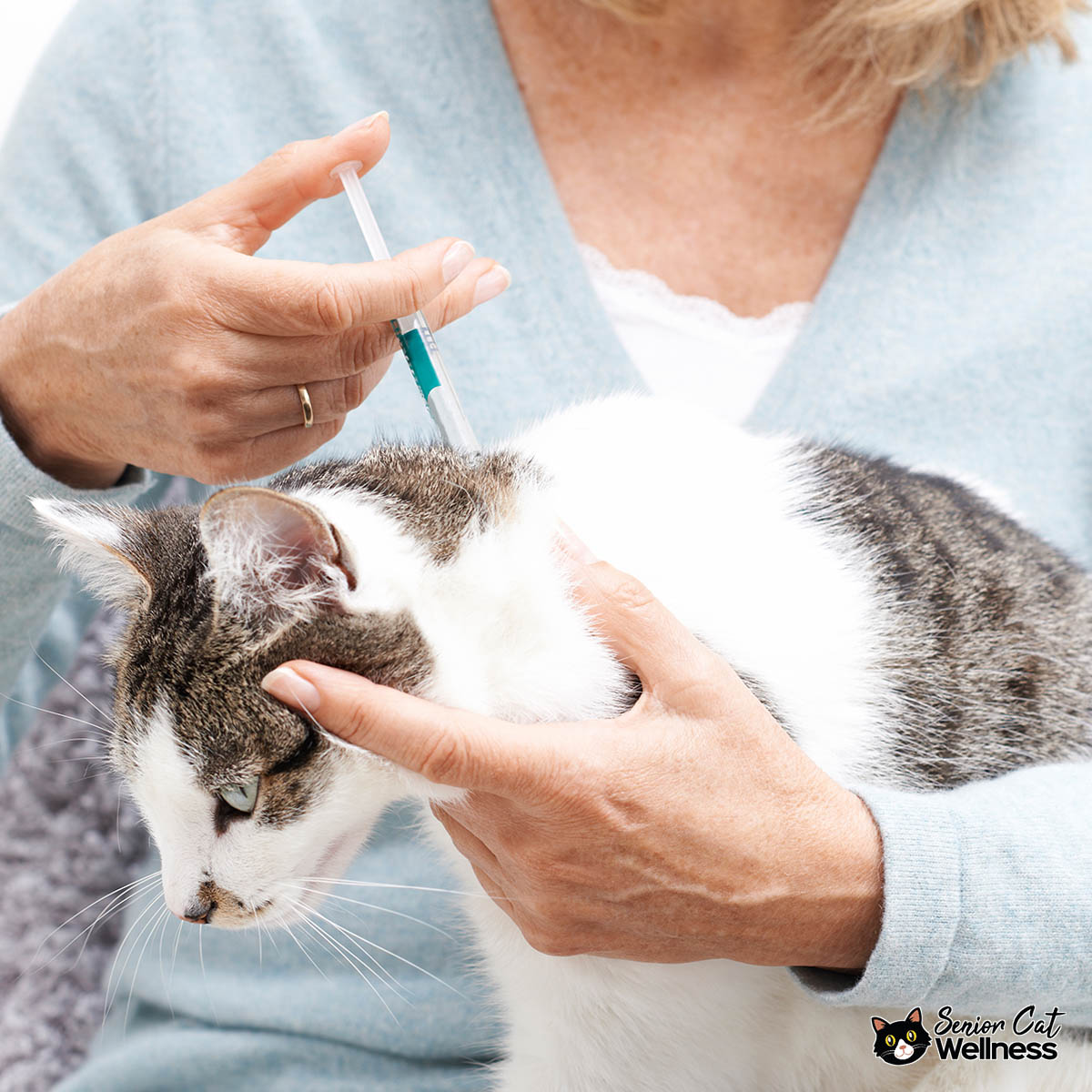Fleas are one of the most frustrating pests to encounter in your home. No matter how many pets you have or how often you keep them indoors, fleas can seem impossible to avoid as a pet owner. The questions that can haunt the mind of someone pestered by fleas are: how do cats get fleas when they don’t go outside? How do indoor cats get fleas?
Fleas can be carried in on any person or object that enters the home from the outside and will remain in the home and reproduce as long as there is a cat or pet warm enough to support the flea life cycle.
Even if you do discover that a flea has made its way into your home and onto your precious furry friend, there is no need to panic! In this article, we’ll cover how cats can get fleas even if they live indoors. We’ll also answer some other frequently asked questions, such as whether or not indoor cats need flea treatment.
How Do Cats Get Fleas When They Don’t Go Outside?
Unfortunately, many people have experienced a similar nightmarish scenario: your cat, who has never spent a second outside the safety of your home or around other animals, has been spotted carrying fleas or harboring the dreaded flea dirt!
This can feel shocking, and many pet owners go into a state of denial or panic when they find out that fleas have managed to get inside their house. The question is, how do cats get fleas when they don’t go outside?
The answer to this question, as previously mentioned, is that fleas can come into your home by catching a ride on you, your guests, or even on furniture being moved in. This might come as a shock, but don’t worry: fleas do not typically remain on humans for any long period of time. This is because a human being lacks two things: a warm body temperature and plenty of fur.
Fleas need that heat and the furry environment of an animal to survive, and unfortunately, your cat provides plenty of both factors. Even though a flea needs hair to hide in and a body temperature of at least 101 degrees Fahrenheit, it can survive by catching a ride on a human long enough to enter a pet owner’s home from the outside.
According to ClearFirst Pest Control, a flea may need an animal host to stay alive long enough to lay eggs; however, fleas can live for as long as two whole weeks without any host. This gives them an unfortunate 14-day period to find an animal to attach themselves to before dying, although it is important to note that the flea cannot actually reproduce without a host.
Therefore, even if your apartment or house is locked down tight and your pet never comes into contact with the great outdoors, a flea can still get past your defenses. In fact, all it takes is one female flea to find a suitable host for you to experience a full-on flea infestation in your home.
Luckily, fleas live out their whole life cycle on one host. They simply come, eat (by biting your poor kitty), lay eggs, and leave. However, those eggs pupate and hatch and go on to live out their own life cycle on the same cat, and so on, unless they are dealt with properly.
So now that we’ve discovered how fleas can make their way into you and your cat’s life, even if that cat never goes outside, we can move on to how to stop the infestation!
How Can I Tell if My Indoor Cat Has Fleas?
Nobody likes to consider the possibility, but as this article has proven, fleas can happen to even the most sheltered indoor cats. The best way to tell if your indoor cat has fleas is to search for signs of scratching, irritated skin, hair loss patches, and even nonstop grooming.
If your cat is constantly trying to get clean or, worse, showing lethargic behavior, it may be time to consider the possibility that your cat has fleas. Even if you don’t see adult fleas, you may find specks that look like dirt on or around your cat; this “flea dirt” is evidence of an infestation.
You can also purchase a flea comb, which is fine-toothed and specifically designed to capture fleas as you brush through your cat’s fur. It is not a surefire way to get rid of all fleas, but it is a good way to find out if they are present on your animal.

Do Indoor Cats Need Flea Treatment?
If your cat does spend its whole life indoors, you may find yourself wanting to skip giving your cat flea treatment. After all, treatments can be expensive and so wide in the variety of products offered that you may decide not to bother with the hassle.
However, it is important to understand that indoor cats do need flea treatment. As we covered above, fleas can survive on their own for two weeks, giving them plenty of time to find a friend of yours or a piece of furniture you’re moving in to hitchhike on and slip past your defenses.
However, if they manage to get into your home only to find their life cycle interrupted by flea treatment, your infestation problem can be over before it even starts! Let’s go over how to treat cats for fleas.

How to Treat Cats For Fleas
As previously mentioned, whether you’re fighting a flea infestation or just enacting preventative measures before the worst can take place, it can be hard to know where to start. We’ve prepared a step-by-step guide to deal with fleas on your cat below!
- Consult a Vet – Truthfully, the best place to start is with the experts. Most veterinarians can help you not only inspect your cat for evidence of flea dirt or fleas but can advise you on which product to use in your battle against the parasites. Many vets can even give you the first dosage of treatment on the same day as your pet’s check-up!
- Select the Product – Not only is step 1 important for professional help from veterinarians, but it also brings you to the vet’s office, which is the only place you can get vet-approved products for flea treatment. Many veterinarians use a once-a-month application so that the female flea is killed, hopefully before laying eggs.
- Continue Treatment For 3 Months – Even if the first round of treatment from the vet is successful in killing adult fleas, you still need to watch out for the flea eggs that may have already been laid. For this reason, most vets will recommend continuing the flea treatment for three months, killing off any fleas that come your way.
- Treat All Pets – Even if your cat is the only animal you seem to be spotting those pesky fleas on, you need to make sure every animal in your home is treated for the full three month period. This is because, although fleas may be more visible or seem to prefer just one animal, they will try to take shelter and wait out the treatment on other pets, too.
Do I Need to Treat My House if My Cat Has Fleas?
The only way to truly rid yourself of a flea infestation is to treat your cat and any other animals in your home with flea-preventative products for three full months. This is because fleas need hosts to complete a life cycle, and most medications only work on one aspect of a flea’s life: adult, pupate, or egg.
A one-time flea medication may wipe out one generation but not the next. Therefore, it is not necessary to treat your whole house because fleas that cannot find a suitable host will simply leave your home or die out. To make your cats unsuitable hosts, treat them for three full months with vet-recommended flea medication.

